RockShox forks overview: models, details, pricing and specification
Everything you need to know about the latest range of RockShox forks

RockShox is one of the market leaders when it comes to suspension, having provided some of the best mountain bike forks and rear shocks to mountain bikers for almost 30 years.
RockShox released the first-ever mountain bike suspension fork in 1990, called the RS-1 — it had two-inches of travel and was essentially a downsized motocross fork. In the years that followed, RockShox even tried suspension forks for road bikes for the 1994 Paris-Roubaix, but as the technology has grown, it has found a permanent home in mountain biking.
Now under the umbrella of SRAM, RockShox forks have come a long way, and now the brand produces everything ranging from lightweight 100mm XC options to dual-crown big-impact-eating forks for downhill bikes.
RockShox forks: range overview
Why trust BikePerfect
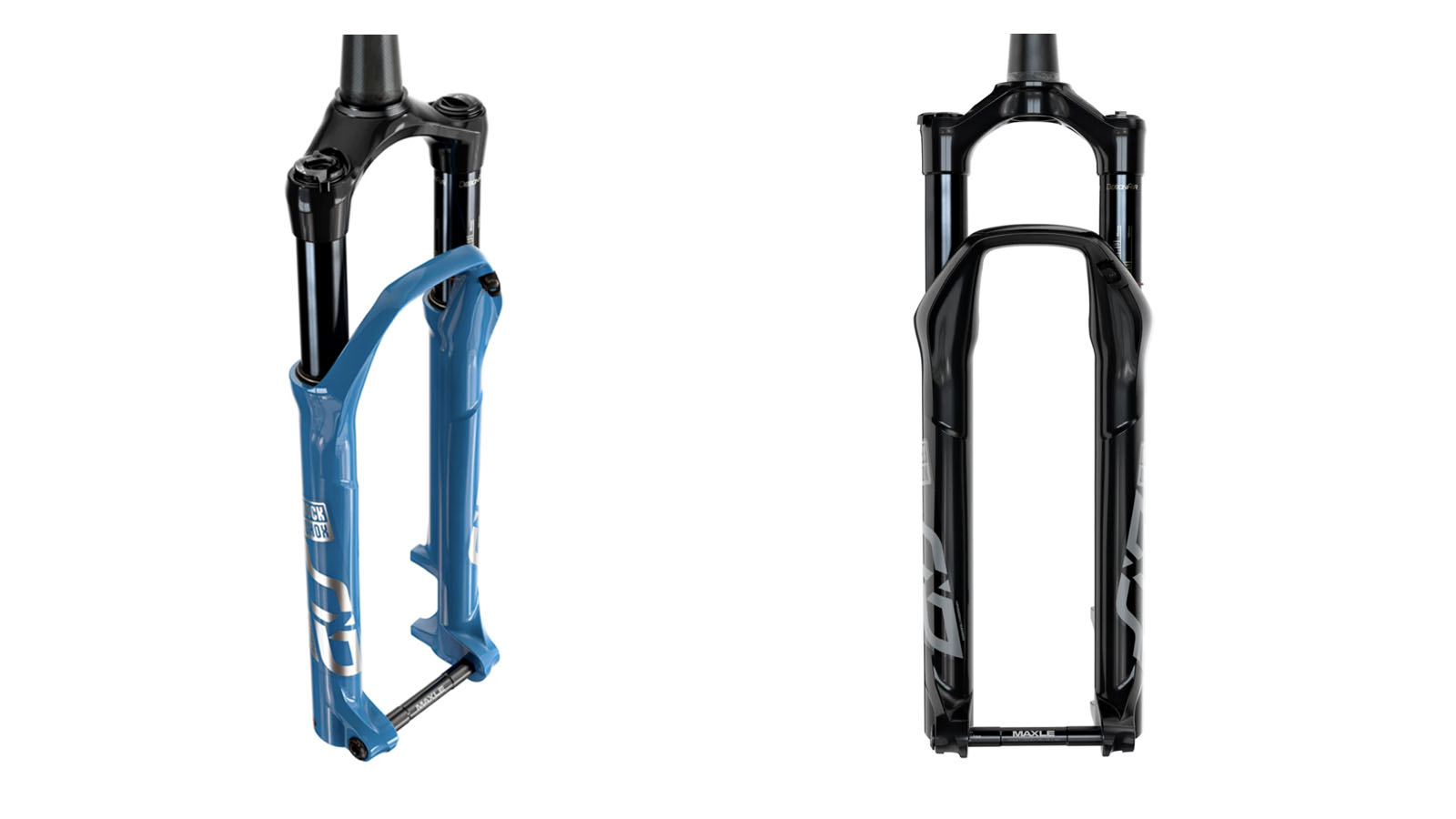
Specifications
Reasons to buy
Reasons to avoid
The Sid is RockShox's all-out XC fork. Available in 100, 110, and 120mm versions, depending on the model, the fork comes in both boost and non-boost spacing and with lowers for 29- and 27.5-inch wheels and tires.
For the latest models, each version uses the Charger 2 damper with the top-of-the-range version bouncing on a Charger 2 RLC damper, DebonAir air spring, a carbon crown, blue lowers and the new foil Graphics.
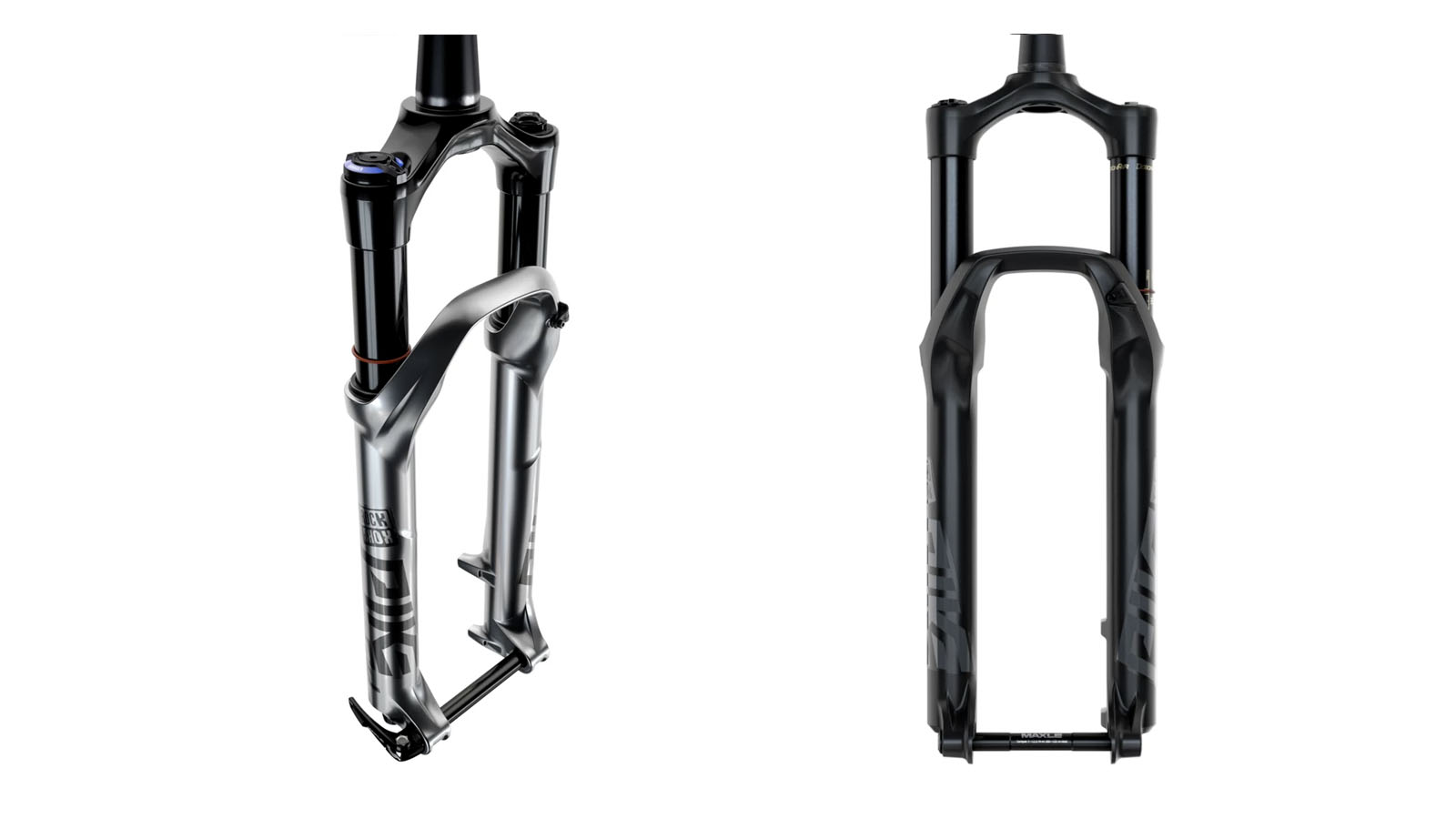
Specifications
Reasons to buy
Reasons to avoid
Serving as RockShox’s do-everything trail fork, the Pike is available in travel from 120mm to 160mm and sees 35mm stanchions, which add weight but also stiffness.
Only available in boost-hub spacing, the Pike features the new Charger 2.1 damper in either the RC 2 or RCT3 spec as well as a Debonair or Solo Air spring. It will accommodate both 27.5- and 29-inch wheels with room for 2.8-inch tires. The Ultimate and Select + specs also see the new SKF Wiper seals and Maxima Plus Oil.
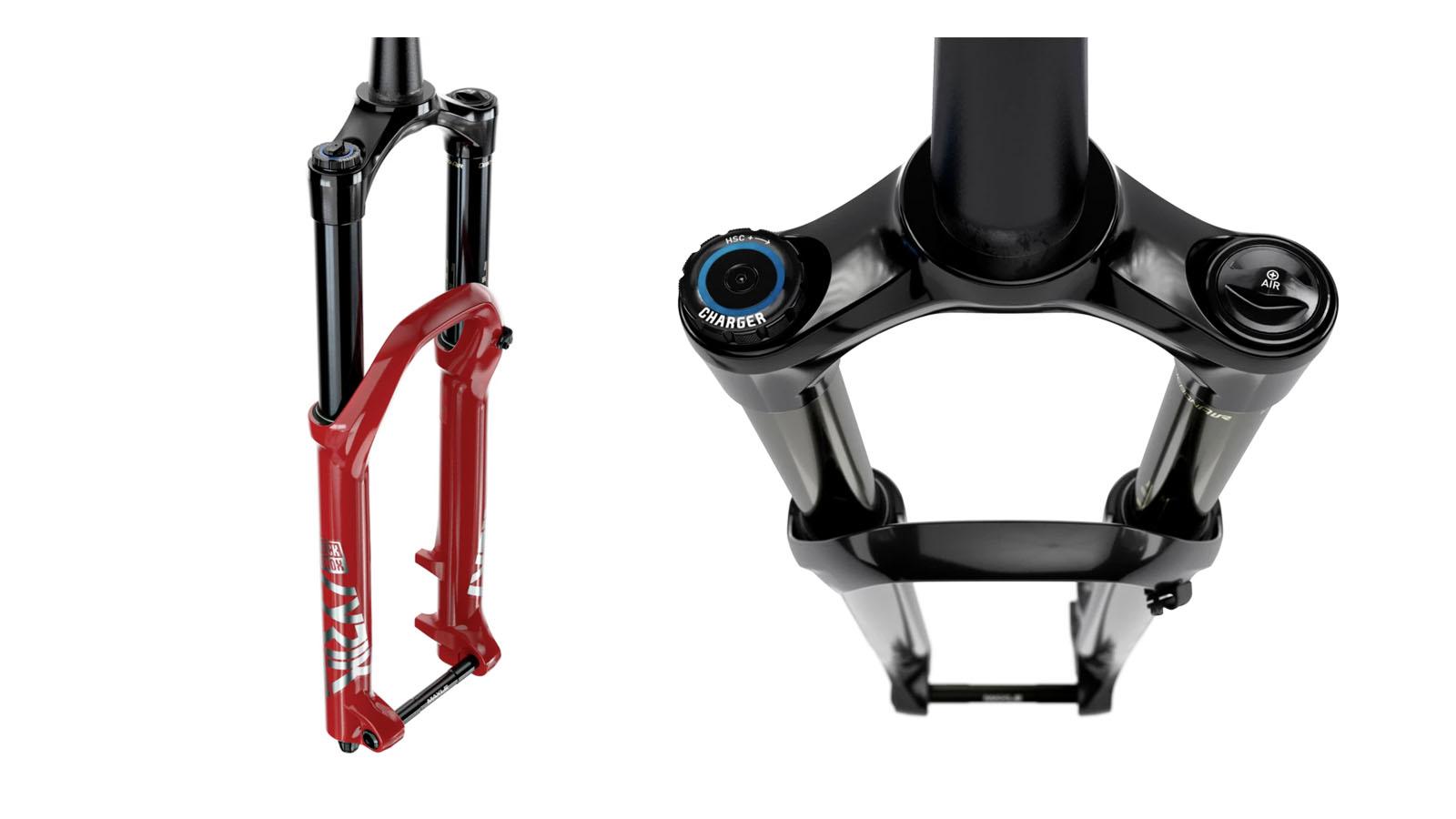
RockShox Lyrik
Specifications
Reasons to buy
Reasons to avoid
Taking a step up in travel, the Lyrik is designed for more aggressive riding and uses a stiffer, heavier chassis for more precise tracking. The stanchions are still 35mm, but the walls are thicker to limit deflection under load.
Available in travel from 140mm up to 180mm, even the bottom-of-the-range Lyrik RC sees a Charger 2 damper with external rebound and low-speed compression adjustments.
Jump up to the Ultimate version and you’ve got yourself a Charger 2.1 damper in either the three-position RCT3 or RC2 as well as the low-friction SKF seals, Maxima fluid and BoXXer-red lowers.
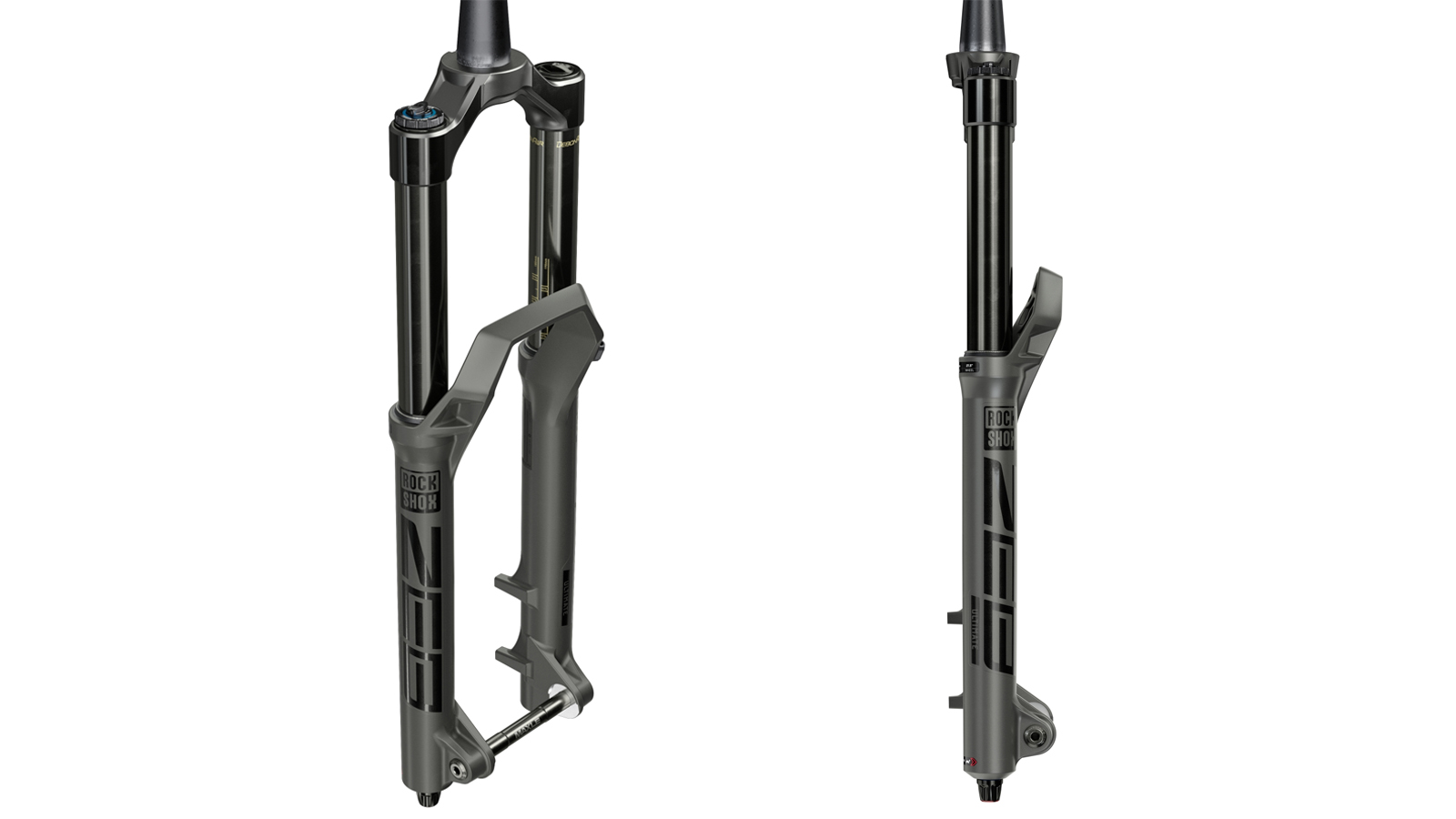
RockShox Zeb
Our expert review:
Specifications
Reasons to buy
Reasons to avoid
RockShox has adapted the excellent internals from the Lyric fork and packaged them up in a beefier 38mm stanchioned chassis to offer ultimate stiffness and smoother compression for riders who are charging the hardest descents or lapping the enduro trails on the e-MTB.
While structural rigidity has been a driver for the increase in tube size RockShox understands the importance of compliance as well, torsionally the Zeb is 21.5 per cent stiffer than the Lyrik to allow pinpoint accuracy in corners however fore/aft and side bending sees only a small increase, 2 per cent and 7 per cent respectively, to help the fork feel less punishing through pinball action sections.
The Zeb comes in a range of travel options from 150mm to an outrageous 190mm for those that are really sending it deep. RockShox offers the Zeb in four options, starting with the basic Zeb equipped with the Charger R damper to the Zeb Ultimate that gets the full Charger 2.1 RC2 works with low and high-speed compression adjustment.
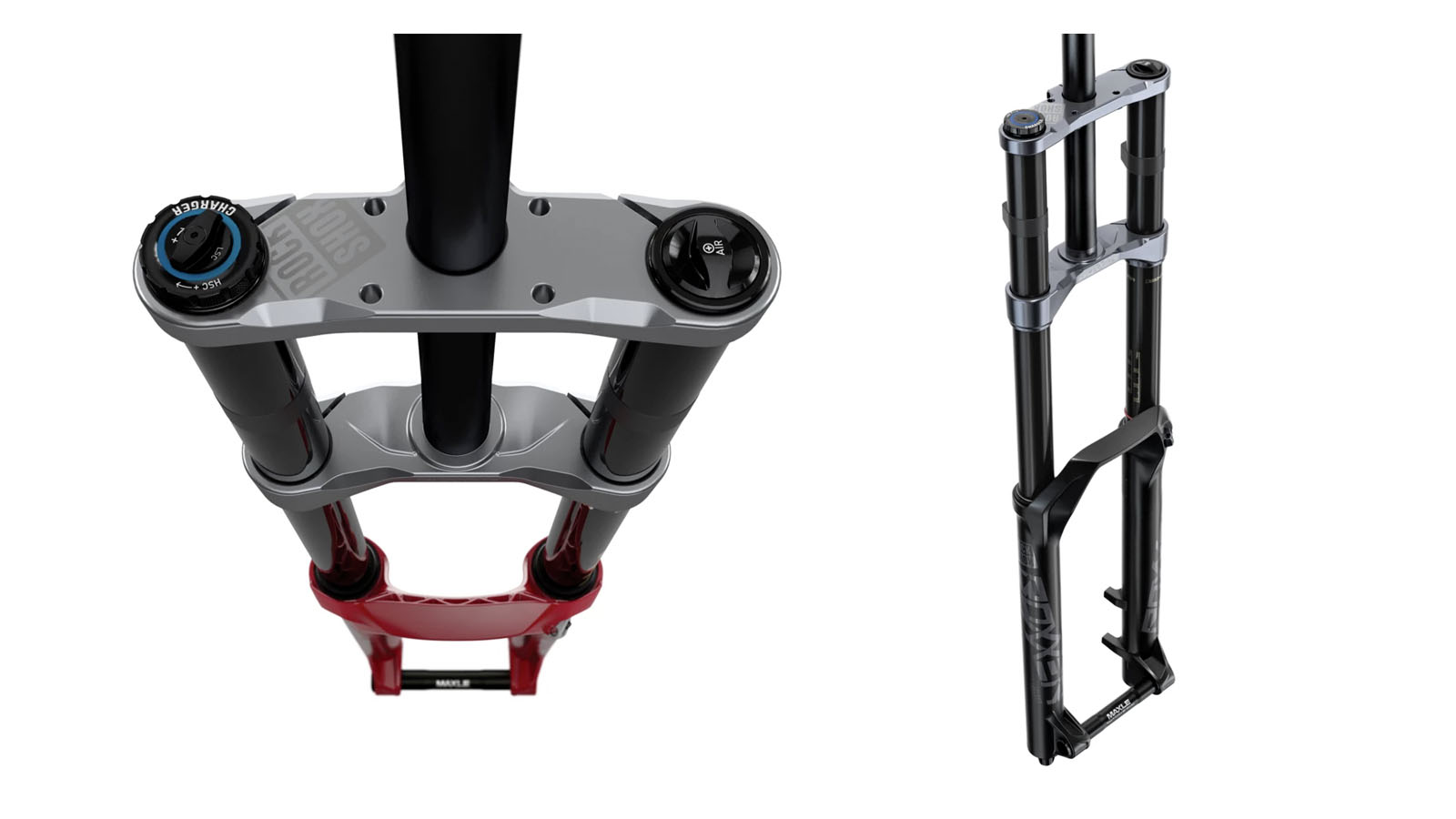
RockShox BoXXer
Specifications
Reasons to buy
Reasons to avoid
With 35mm stanchions, the dual-crown BoXXer DH fork is available for both 29- and 27.5-inch wheels and is equipped with a special downhill-specific friction-reduced DebonAir air spring.
With the option of a Charger 2.1 or Charger 2.1 RC2 damper, the fork tops out at 200mm of squish, and the flagship Ultimate version is equipped with new low-friction SKF wipers and Maxima Plush Oil said to reduce friction and quiet damper noise, too.
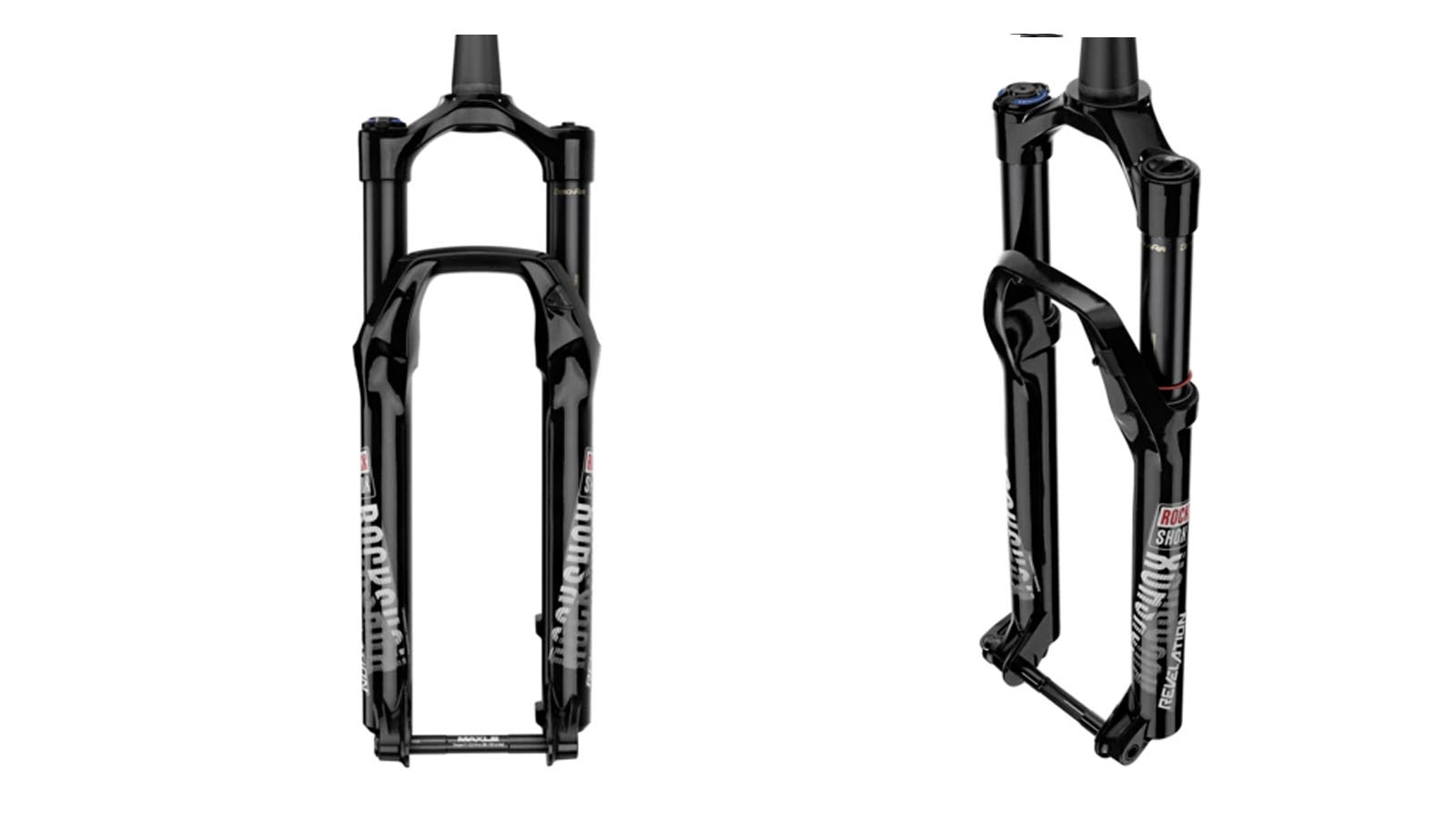
RockShox Revelation
Specifications
Reasons to buy
Reasons to avoid
Based on the same chassis as the Pike, the Revelation offers the same range of travel as its more expensive cousin (120mm-160mm) with a less-refined damper. All the Revelation forks bounce on a DebonAir Spring but trade the Charger 2.1 damper for the Motion Control version.
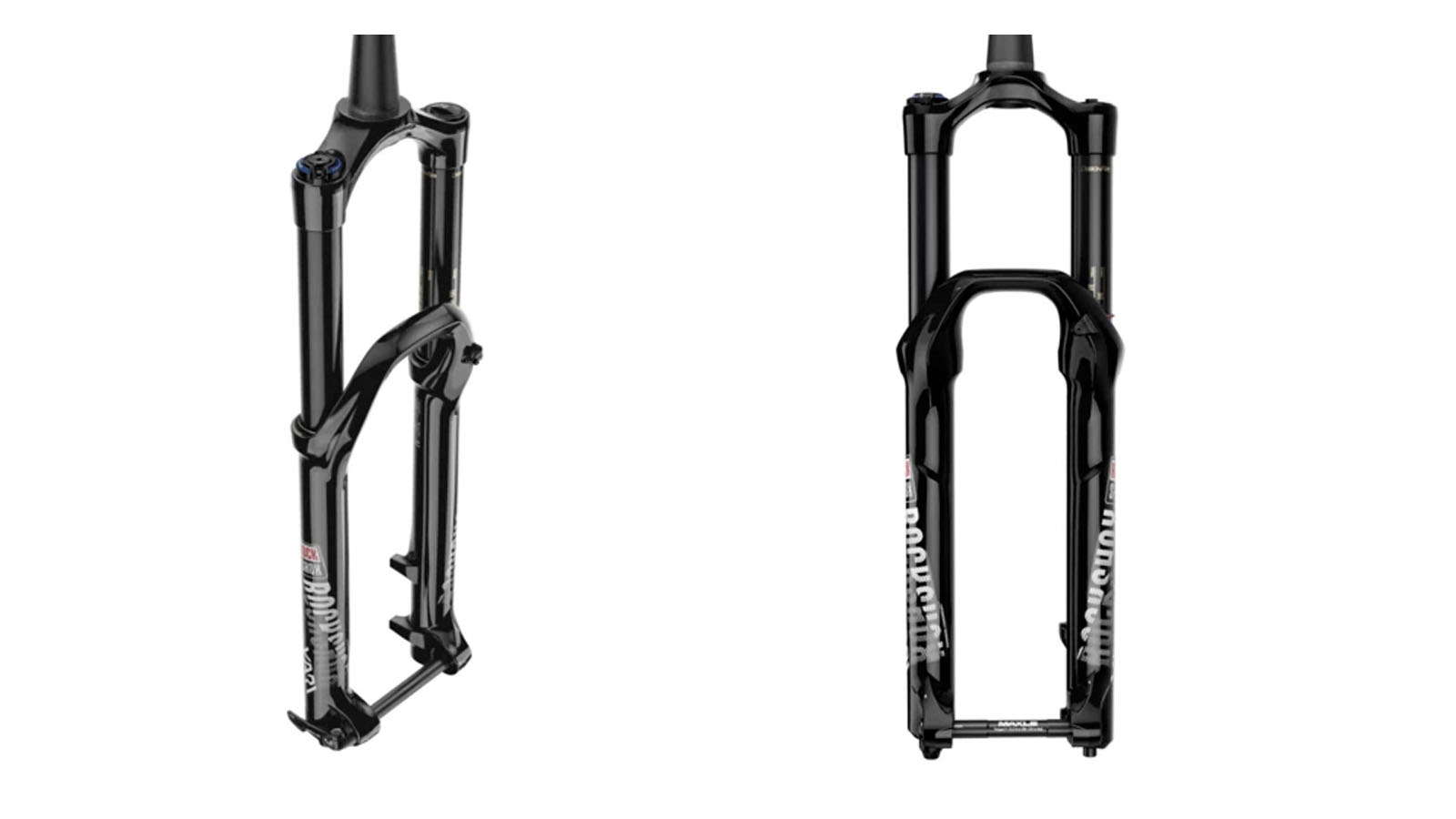
RockShox Yari RC
Specifications
Reasons to buy
Reasons to avoid
In the same way the Revelation is to the Pike, the Yari is to the Lyrik. Borrowing most of the design features of the Lyrik, the Yari features the same amount of squish but downgrades to either a Charge RC or Motion Control damper.
With 35mm stanchions, the Yari is often found on e-MTBs as it offers big travel and plenty of stiffness but doesn't send the already high cost through the roof. All the Yari forks are equipped with the brand’s DebonAir or Solo Air springs.
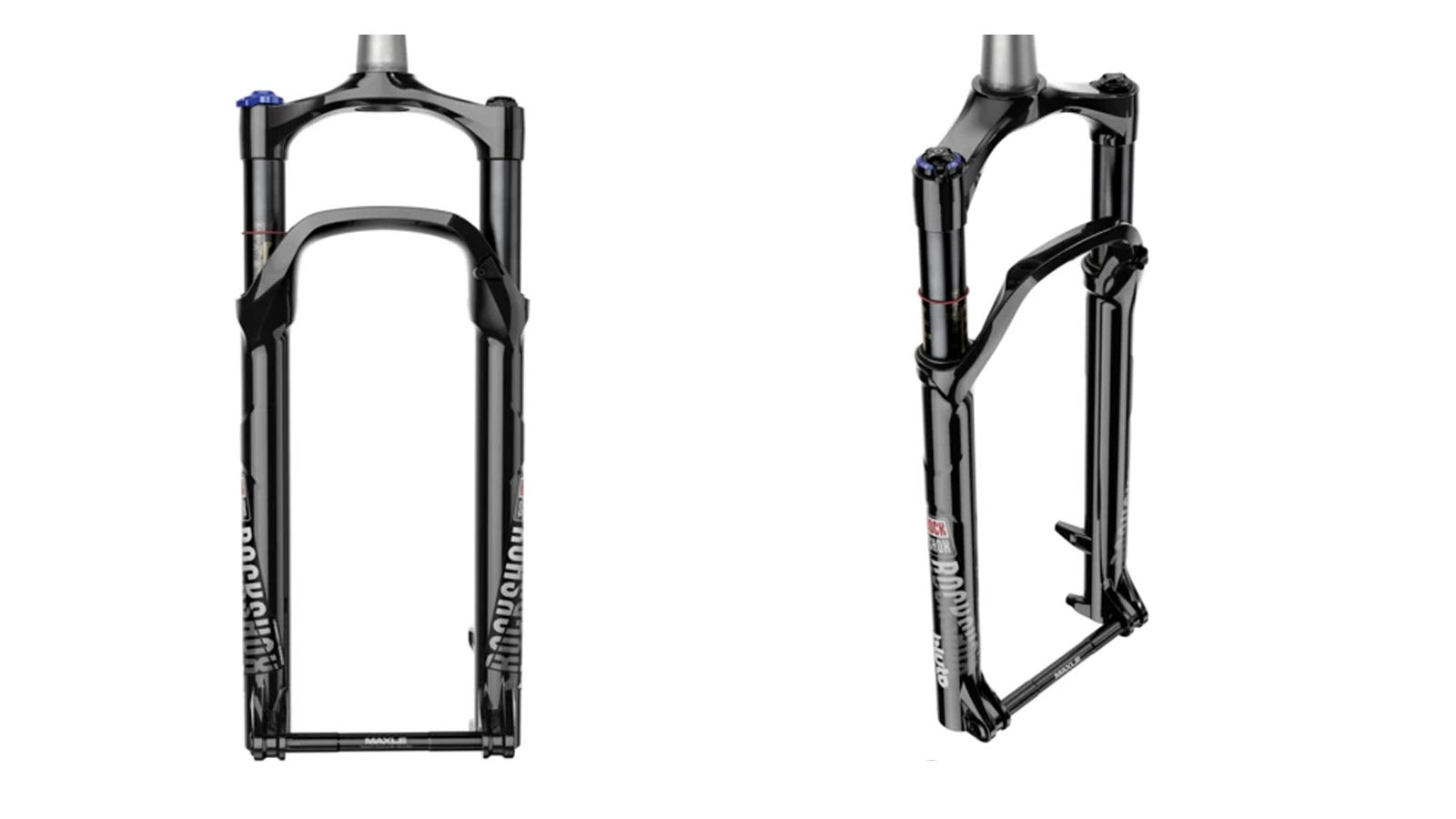
RockShox Bluto
Specifications
Reasons to buy
Reasons to avoid
Named after Popeye’s arch-nemesis, the Bluto is one of only a few production suspension forks for fat bikes. With enough room to clear a 26x4.8-inch tire, the Bluto offers 80mm, 100mm or 120mm of bounce and 150mm hub spacing. RockShox also says the seals and grease used in the fork are rated for low temperatures and don’t freeze up in arctic conditions.
With 32mm stanchions, the fork comes with a Solo Air spring and a Motion Control damper, which allows for external rebound, compression adjustment and lockout. The RLT3 spec has three-pedal modes and low-speed compression.
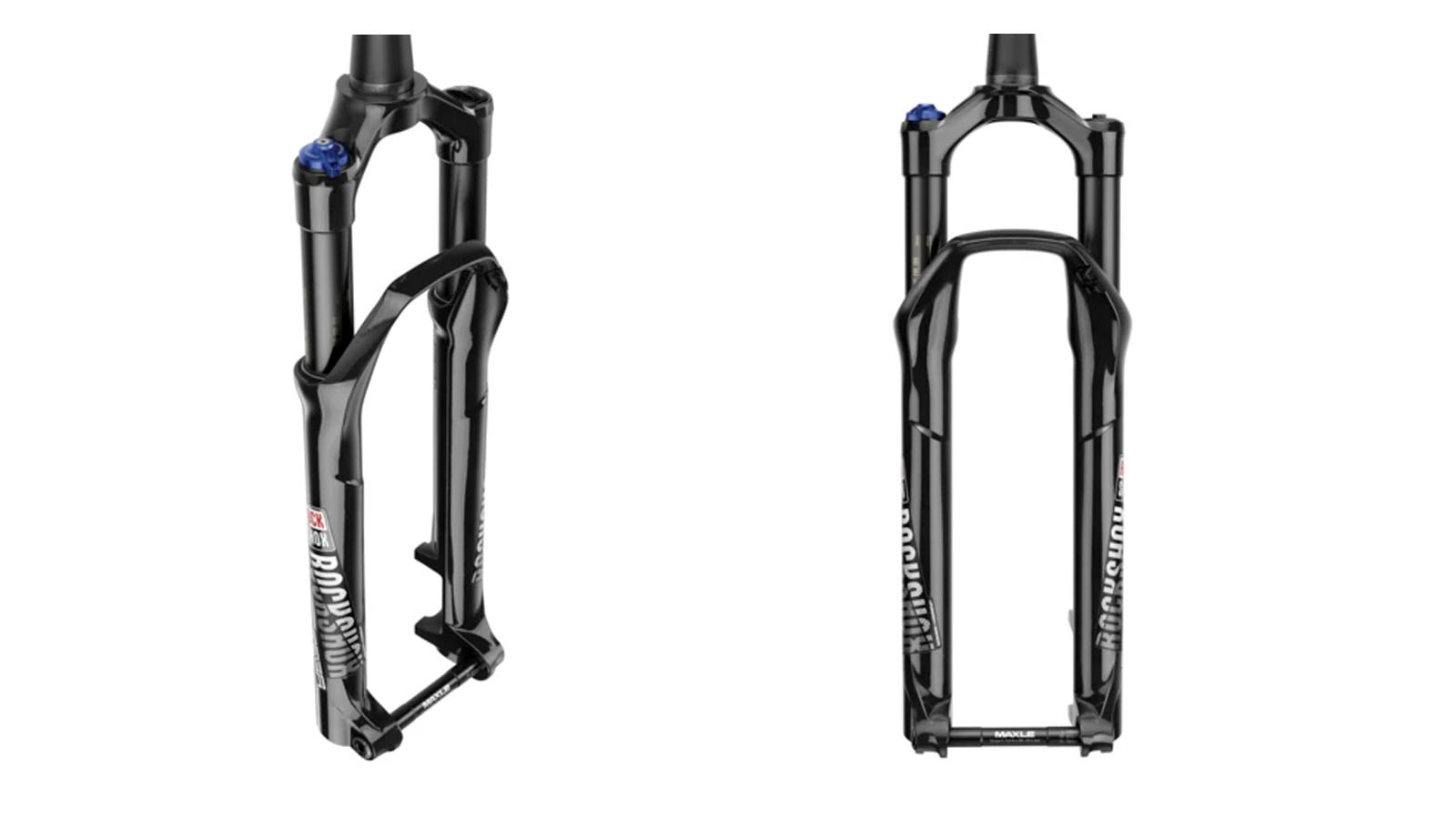
RockShox Reba
Specifications
Reasons to buy
Reasons to avoid
Designed for XC or light trail riding, the Reba is a capable budget-friendly fork. For the money, it’s one of our favorite forks in the RockShox catalog.
Although it features similar travel numbers as the Revelation, the 32mm stanchions mean it doesn’t track quite as straight through heavy braking or high-speed cornering. RockShox makes the fork in 26- up to 29-inch versions, and each comes with a Solo Air Spring and Motion Control damper.
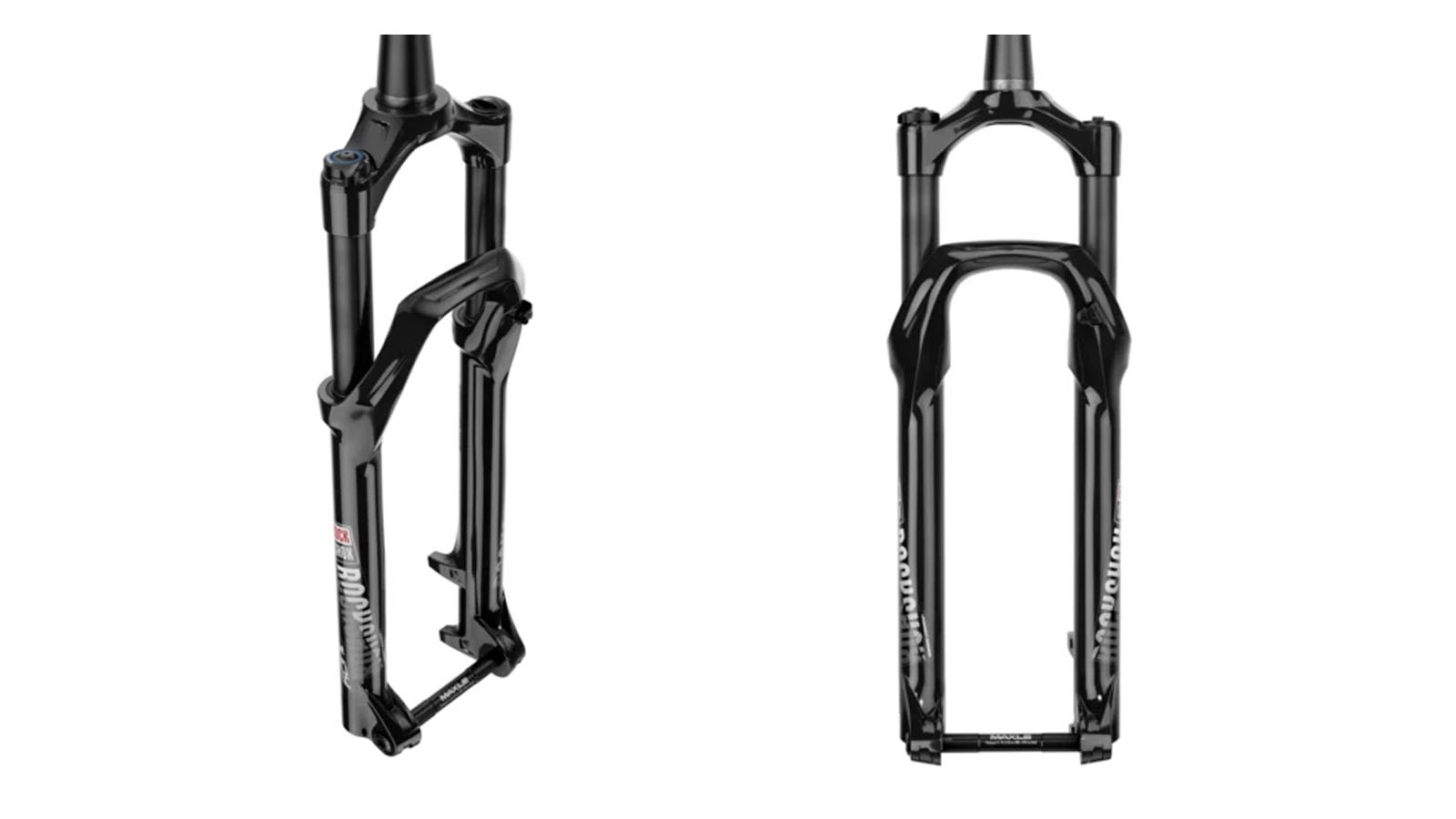
RockShox Judy
Specifications
Reasons to buy
Reasons to avoid
First launched in 1995, the Judy has come quite a long way. Positioned as a budget-friendly XC and light trail fork, the Judy sees plenty of trickle-down tech from the Pike.
Available in travel ranging from 80mm to 120mm, it’s available in 27.5- and 29-inch sizes and sees enough clearance for a 2.8-inch tire. Both versions of the Judy fork - gold or silver - feature a Solo Air spring.
The Gold Spec version gets a Motion Control damper complete with rebound and low-speed compression adjustment and lockout. The Silver spec sees a TurnKey damper, which still offers rebound adjustment and lockout.
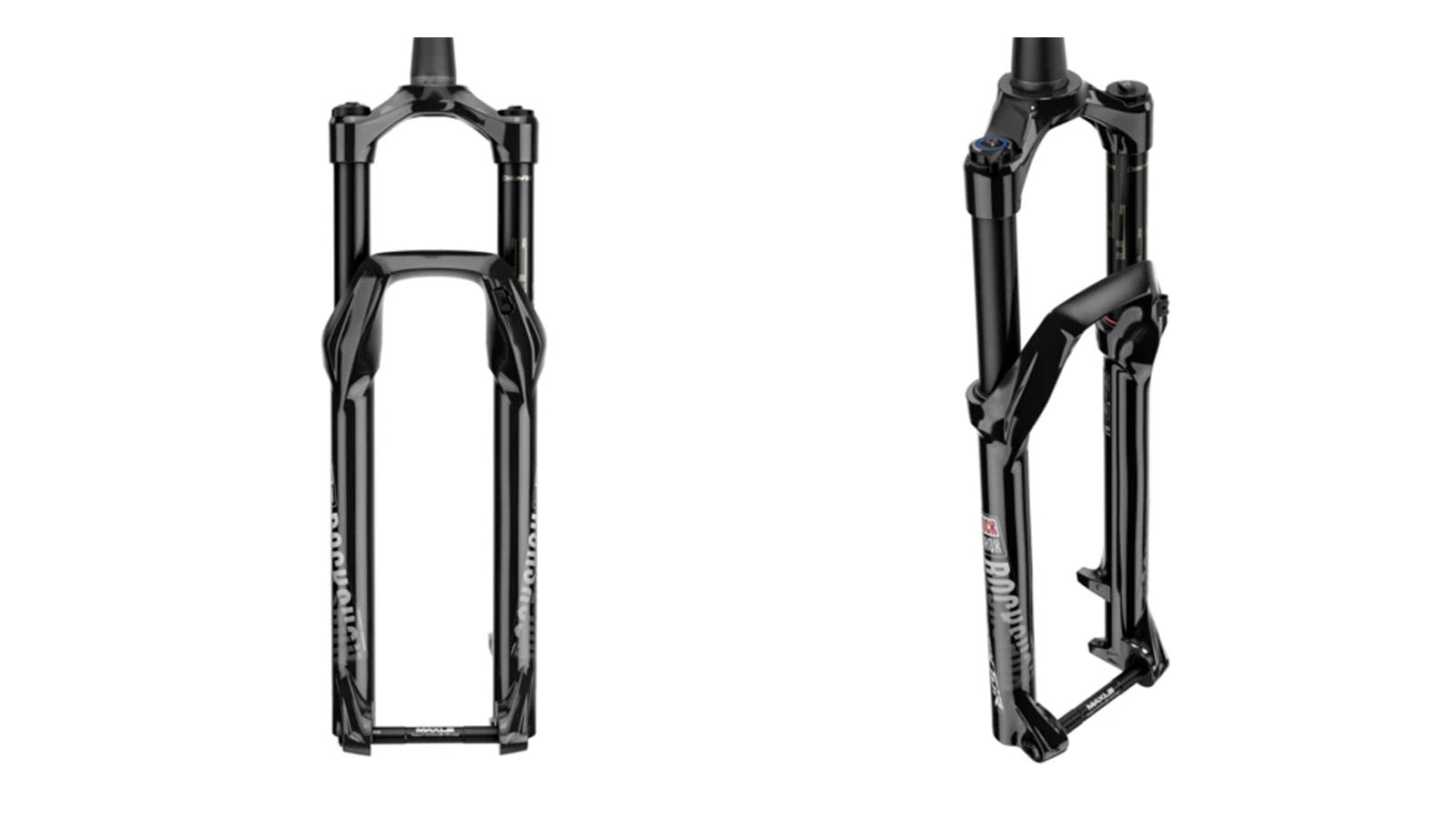
RockShox Sektor
Specifications
Reasons to buy
Reasons to avoid
Placed at the lower end of its product range, RockShox gave the Sector a makeover last year upgrading the fork with aluminum uppers and a DebonAir spring. Available with 80mm to 150mm of travel, the axle to crown measurements are the same as the Pike, and the fork is controlled by a Motion Control damper.
With 32mm stanchions, Boost-hub spacing and a tapered steerer tube, the Sektor is a veritable sleeper - a high-performing fork for those that don’t have much to spend.
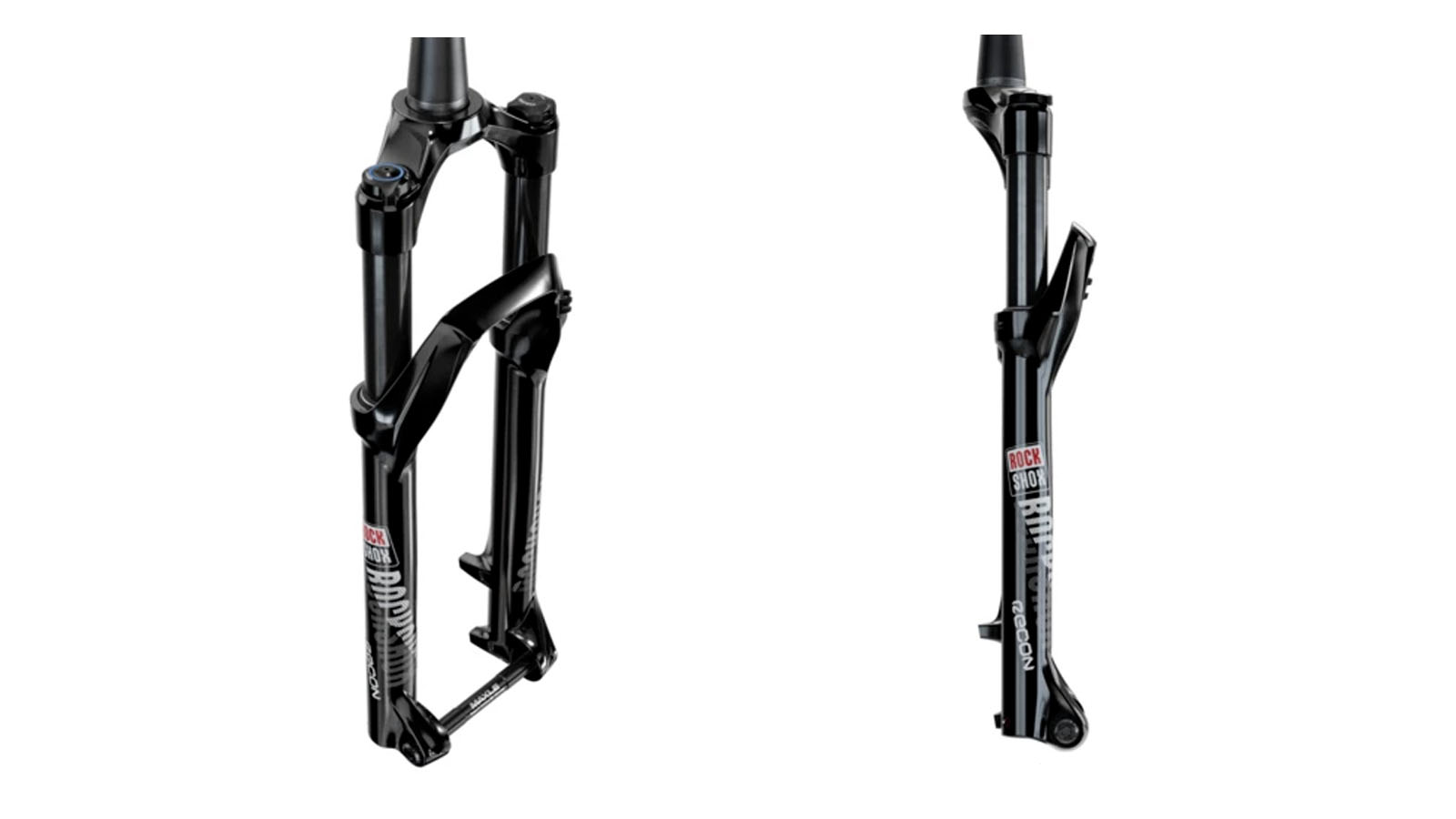
RockShox Recon
Specifications
Reasons to buy
Reasons to avoid
Taking another step down in price, the Recon RL is a value-based fork with 32mm stanchions that covers travel from 80mm up to 150mm. It features a Motion Control damper, Solo Air spring and will even play nice with a bar-mounted lockout remote.
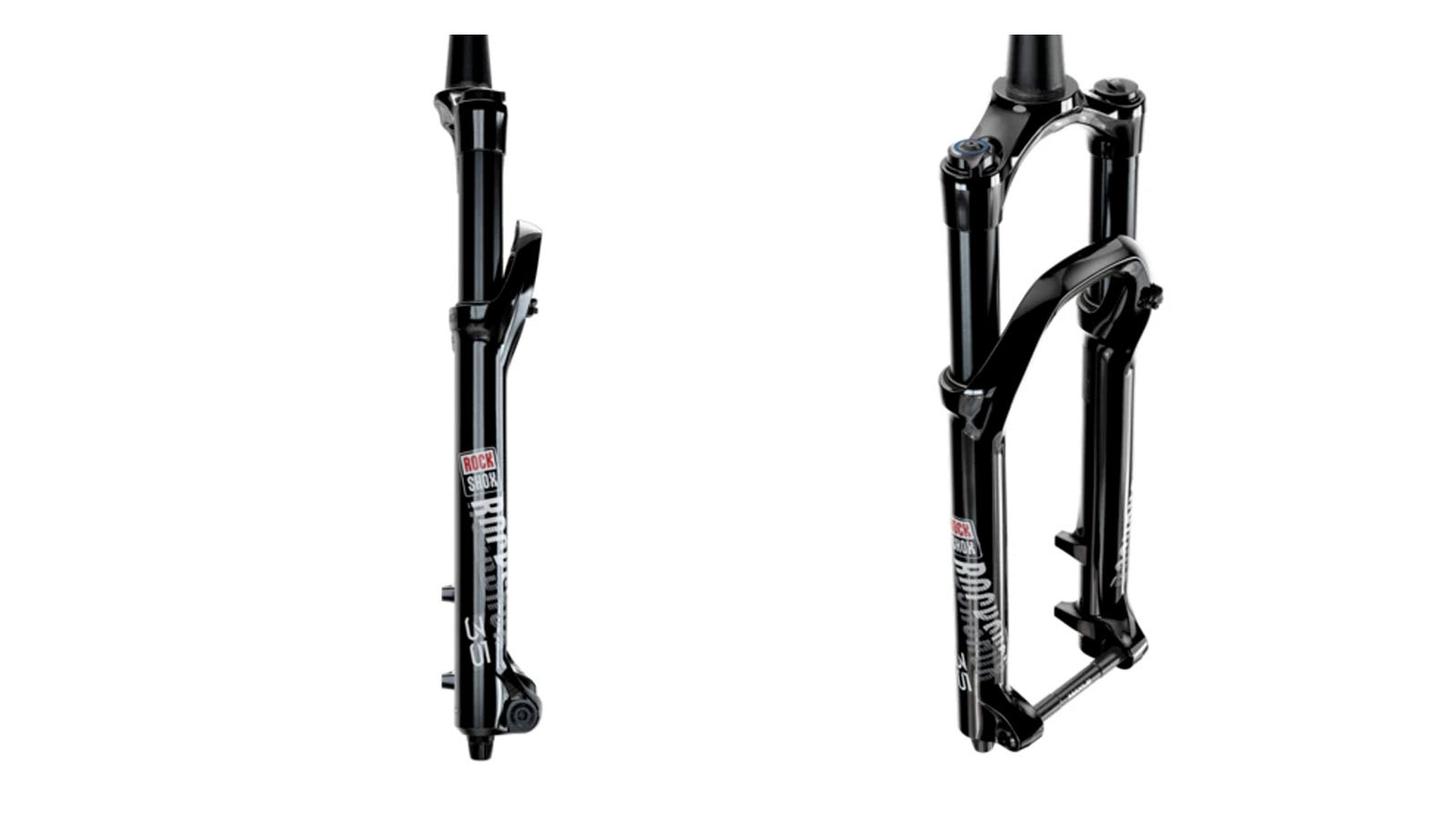
RockShox 35
Specifications
Reasons to buy
Reasons to avoid
As you can probably guess from the name, the 35 is based around a 35mm chassis and is a supremely stiff fork when you consider how low it sits in RockShox's product hierarchy.
Boasting travel options from 100mm to 160mm, the fork floats on the DebonAir spring. It comes fitted with a Motion Control damper and can be had with a simple lockout, too.
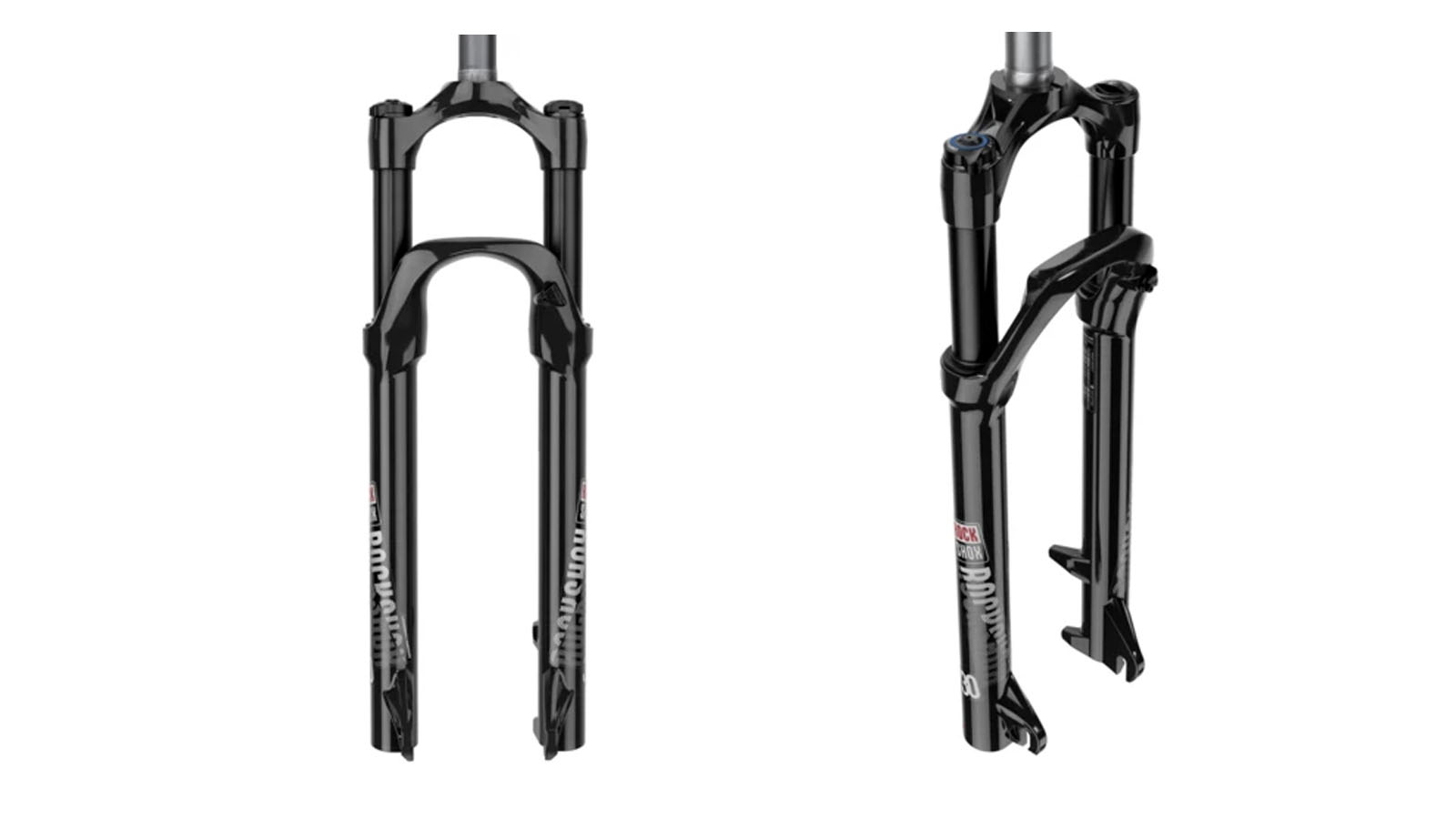
RockShox 30
Specifications
Reasons to buy
Reasons to avoid
Occupying the lower step of the RockShox range of suspension forks is the 30. The fork uses 30mm stanchions and is one of the only proper off-road forks that will still accept a quick release.
Available in two spec levels, the 30 Gold RL has a Motion Control damper allowing for low-speed compression, external rebound adjustment and lockout, as well as a SoloAir Air spring. The Silver TK comes in either SoloAir or coil-sprung varieties and gets a TurnKey damper.
RockShox fork tech explained
When it comes to mountain bike suspension forks, you need to understand what dampers, air springs volume tokens and sag gradient do. After all, these parts are responsible for the way your fork performs.
RockShox Charger Damper
With a fully sealed bladder to keep suspension oil and air free, the Charger is RockShox's best damper. The latest 2.1 version sees changes in the valving to help the fork sit higher up in the travel by allowing less high-speed compression, more usable low-speed compression damping and additional rebound control. The updated version also gets SKF seals in the upper and lower legs, and a new piston wear band inside the damper claims to reduce friction over its predecessor.
Motion Control Damper
The Motion Control damper is RockShox's mid-range emulsion damper — it’s not a sealed unit, meaning air can mix with the oil as the fork actuates, leading to less controlled damping after repeated hits.
TurnKey Damper
The TurnKey damper is RockShox's most basic and affordable option found on the entry-level forks. As a basic emulsion damper, the TurnKey offers the least controlled dampening.
DebonAir spring
With a high-volume negative air spring and minimal breakaway force for small-bump compliance, the DebonAir spring is RockShox's flagship air spring.
Solo Air spring
The Solo Air gets its name because you only have to add air to the one valve, and it will equalize the negative pressure on its own. In years past, RockShox offered a Dual Air spring that required you to pressurize both the positive and negative air chambers.
Bottomless Tokens
Bottomless Tokens are what RockShox calls the spacers used to adjust fork progression. Adding tokens reduces the volume of the air spring and makes the fork harder as it dives deeper into the travel to prevent a possible bottom out. Tokens vary in color depending on your fork and air spring.
Sag Gradients
RockShox streamlines setting up your fork by printing the sag gradients directly onto the upper stanchions, eliminating the need for tape measures or rulers.
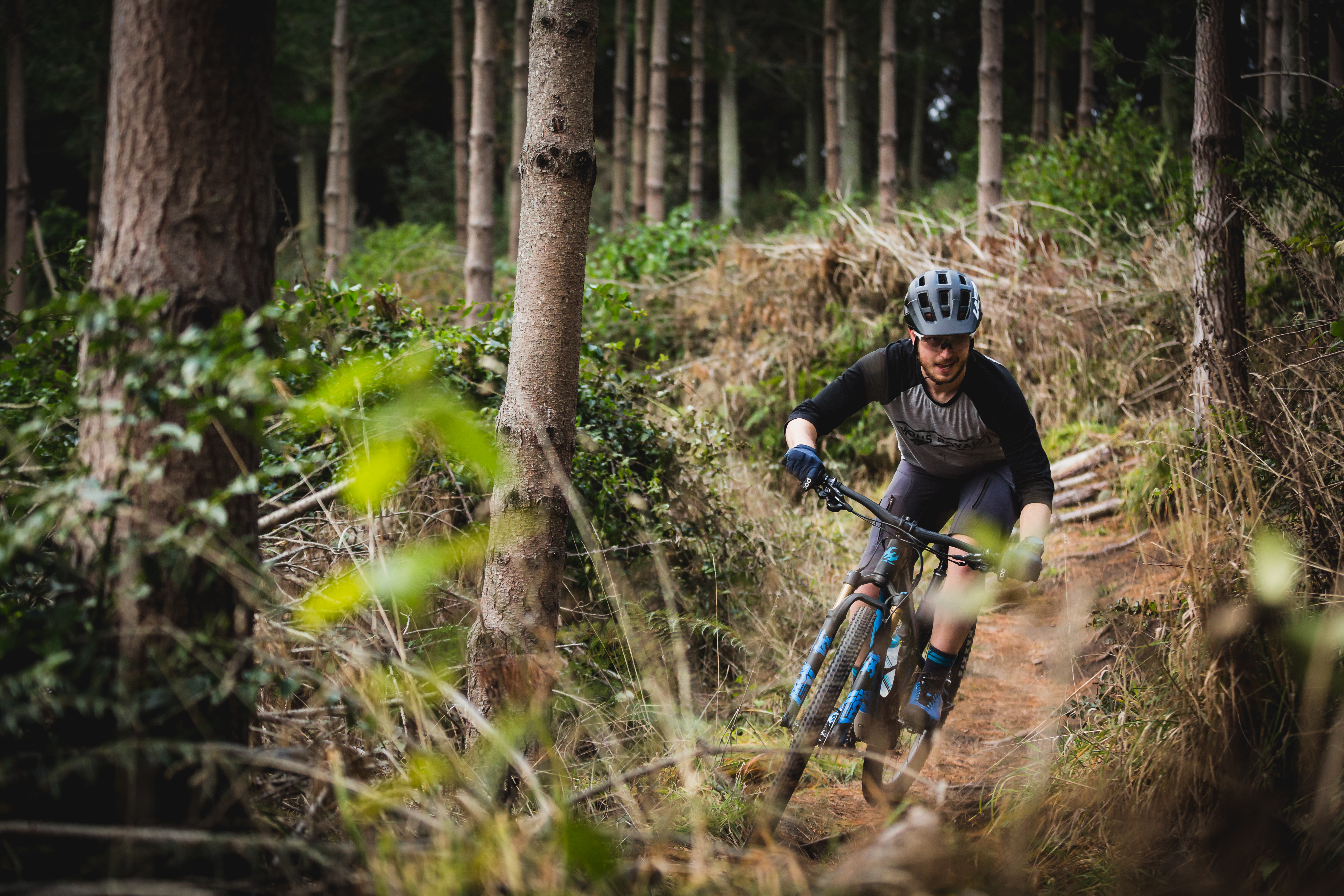
Born and bred in Colorado, and now based in Australia, Colin comes from a ski racing background and started riding as a way to stay fit through the summer months. His father, a former European pro, convinced him to join the Colorado State University collegiate cycling team, and he hasn't stopped since. It's not often he pins on a number nowadays, and you'll likely find him in search of flowy singletrack, gravel roads and hairpin corners. Colin has worked at Bikeradar and is a regular contributor to Australian Mountain Bike and Cyclist magazines.
Rides: BMC Team Machine SLR01, Trek Top Fuel 9, Ibis Ripley
